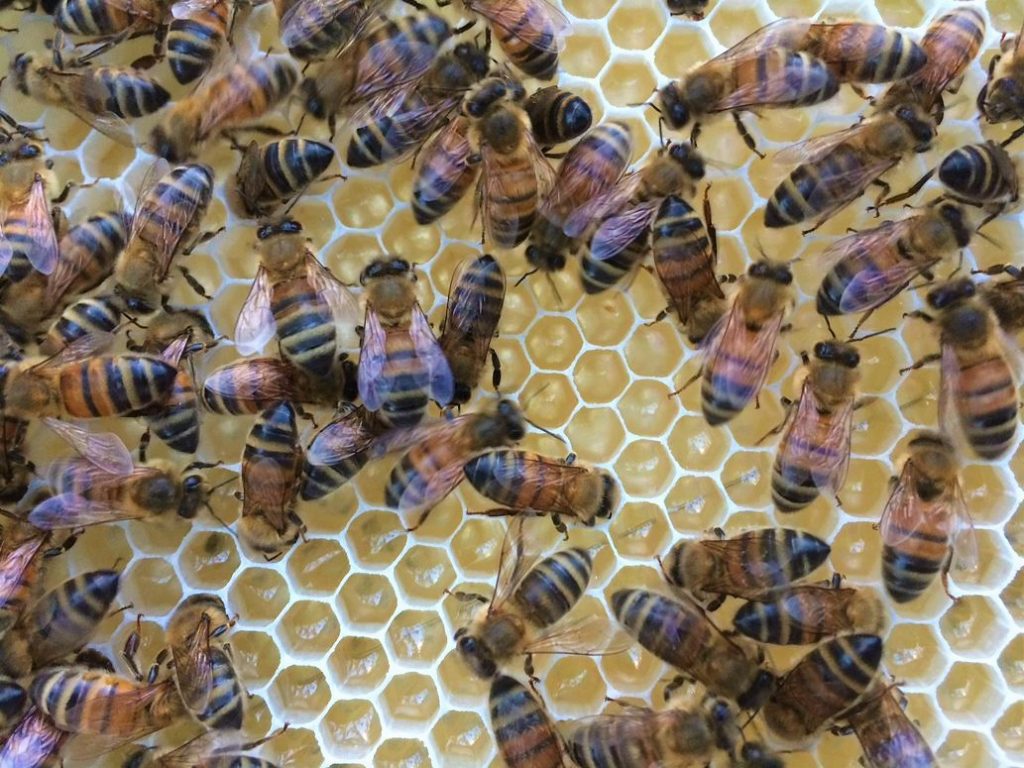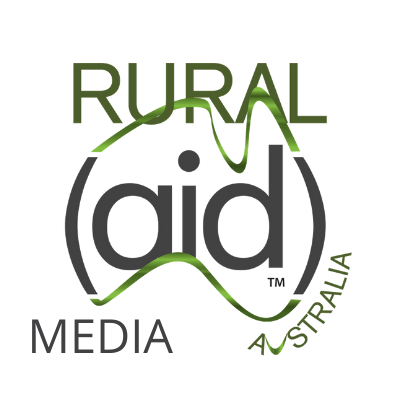‘BEE AN ANGEL’ AND HELP RURAL AID SUPPORT AUSTRALIA’S LITTLEST LIVESTOCK

When it comes to agricultural sustainability, honeybees impact well above their size
When our national parks are our home and we’re feeling a little displaced after the bushfires – with habitat loss and our food source gone – we need a little help.
We’re the little livestock that makes a big impact. We’re the honeybees and we’re crucial to everything you eat, every day.
Without us, your favourites like avocados, almonds and blueberries wouldn’t be a reality. Did you know that 9 billion of us are on our way to Victoria’s almond farms to help with pollination as well as collect nectar for honey?
Rural Aid CEO John Warlters said they are one of Australia’s littlest livestock and their work is essential to all levels of our food system.
“Without bees, a third of the supermarkets would be empty and your favourites at the farmers markets would be in short supply,” John Warlters said. “Through Rural Aid’s Stronger Futures program, Hive Aid is ensuring that this essential industry is safeguarded for generations to come, but we need your help.”
“Recent events including drought and bushfire impacted thousands of beehives across Australia. Thankfully, our littlest livestock Aussie farmers, yes – you may know them as beekeepers, are doing their best to get back on their feet. However, they are struggling to feed their bees and pay their bills.
“That’s why we are asking everyone to #BeeAnAngel by supporting Australia’s littlest livestock, the honeybee.”
The good news is, there are easy ways to help support our littlest livestock farmers by:
- Bee awesome, bee kind, bee an angel
- Planting some native flowers
- Donating a portion of your grocery shop to Hive Aid: www.ruralaid.org.au/hiveaid
- Creating a fundraising page: www.ruralaid.org.au/hold-a-fundraising-event/
- Schools can also get involved by either raising funds, planting flowers, or even building their own beehives.
Your support will allow Rural Aid to provide support to keep our hives alive and the industry flourishing.
To support our beekeepers and their bees, please donate at: www.ruralaid.org.au/campaigns/hiveaid/
About Rural Aid
Rural Aid is one of Australia’s largest rural charities. Well known for the highly successful ‘Buy a Bale’ campaign, the charity also provides financial assistance, water and counselling to farmers in times of drought, flood or fire. Other initiatives support its vision that farming and rural communities are safeguarded to ensure their sustainability both during and after these natural disasters. Visit www.ruralaid.org.au for further information on these programs and other support for our rural communities.
Media: 0447 116 757 | media@admin.media.ruralaid.org.au
Spokesperson: Rural Aid CEO John Warlters | 0409 618 641
Follow Rural Aid for updates on:
Rural Aid – FB: @ruralaidaustralia | IG: @ruralaid |IN: Rural Aid Ltd | TW: @ruralaidaust
Buy A Bale – FB: @buyabaleofhay | IG: @buyabale | TW: @buyabale
Interesting Bee Information from Hive and Wellness Australia: hiveandwellness.com/en-au
Beekeeping Costs
- $25 buys a queen bee
- $50 two queen bees
- $150 1 x 20KG bag of Pollen supplement (one week’s worth for 40 hives)
- $200: Nuc hive (baby/starter hive)
- $500: Tank of diesel for typical commercial bee truck
- $1000 One month’s worth of supplementary sugar feed for starving hives that don’t have immediate access to nectar – this is a last resort to keep the bees alive. Honey cannot be produced off this process.
General
- There are around 1500 commercial beekeepers in Australia who care for bees, produce honey and pollinate food crops for a living. Many of these families are feeling the impact of bushfire, drought and floods.
- Beekeepers are now travelling 1000kms more than usual to find sufficient nutrition for their bees.
- Without bees, fresh produce will be adversely impacted, including apples, cucumbers and other fruits, vegetables and buts. Some crops, like almonds, avocadoes and blueberries, are 100% dependent on honeybee pollination.
- Honeybee pollination is worth $14 billion to the national economy, a vital element in dozens of associated regional industries including the billion-dollar almond industry, Australia’s largest horticultural export.
- Many professional beekeepers are in maintenance mode, focusing on nursing their bees that are not strong enough to go into honey production or pollination services. This means beekeepers whose livelihoods depend on beekeeping are under threat and so is the fresh food aisle, with 1/3 of everything we eat needing honeybees for pollination – another service professional beekeepers offer in addition to producing pure honey from the bush.
- Due to all of the above factors, many Australian beekeepers are down in honey production by up to 70%. Sadly, there is no short-term relief in sight due to the great swathes of floral resource lost or damaged from drought and bushfire.
- We’ve seen rain recently, but this does not offer any resolve. Drought affected trees sometimes take 2-4 years to regenerate and trees burnt in the bushfires could take even more than that. The other issue is if we get too much rain. It can be detrimental to the trees, or it can prevent beekeepers moving bees into sites as their trucks can become easily bogged.
- The plight of our industry is severe and unfortunately the government support currently available to beekeepers has been inconsistent across each state. What is critical right now is that professional beekeepers can get much needed support to supplement bees where nutrition from the environment is unavailable due to drought and bushfires, and that we don’t see a mass exodus from the industry. Beekeepers are the cornerstone of Aussie agriculture and we need to ensure there is enough support accessible for these hardworking, forgotten farmers. This is what sparked the need for the Hive Aid campaign to ensure professional beekeepers could access support nationally.
NSW
- NSW bushfires that have burnt over 9,809 hives and wiped out the field bees of over 88,094 hives
- Burnt just over 5 million hectares of forests (this is 10 times the annual average in a regular year for NSW)
- 67% of national parks on the eastern seaboard have been burnt, this was prime beekeeping country
- Flooding has been a massive issue down near the Pilliga. Hives needing to be airlifted from sites or rescued with boats. One of our beekeepers lost 800 hives.
- It is estimated that the NSW beekeeping industry contribute around $36 million annually to the state’s economy through the production of honey, bees wax and other hive products.
QUEENSLAND
- 90% of Crown land is currently unproductive due to fires and drought.
- There are approximately 79,000 professional hives in Queensland with approximately 45,000 that are used for pollination (for avocados, strawberries, macadamias, etc.). But due to stress from drought and fires, there is going to be less hives at pollination this year. This will have a significant flow on effect to fresh produce in the fresh food section for grocery.
- Honey and honey products contribute $65 million per annum to Queensland’s economy but pollination dependent crops produce $2.4 billion per annum. Queensland Government is concerned regarding the impact of drought and fires on bees and what it will have on the ability of the horticultural industry to maintain production levels and contribute to Queensland economy.
- Many Queensland beekeepers had to move their hives to Central Victoria to support their hives.
- 45,000 hives have required drought assistance over the last two months.
- Drought is more an
issue in Queensland than fires.

